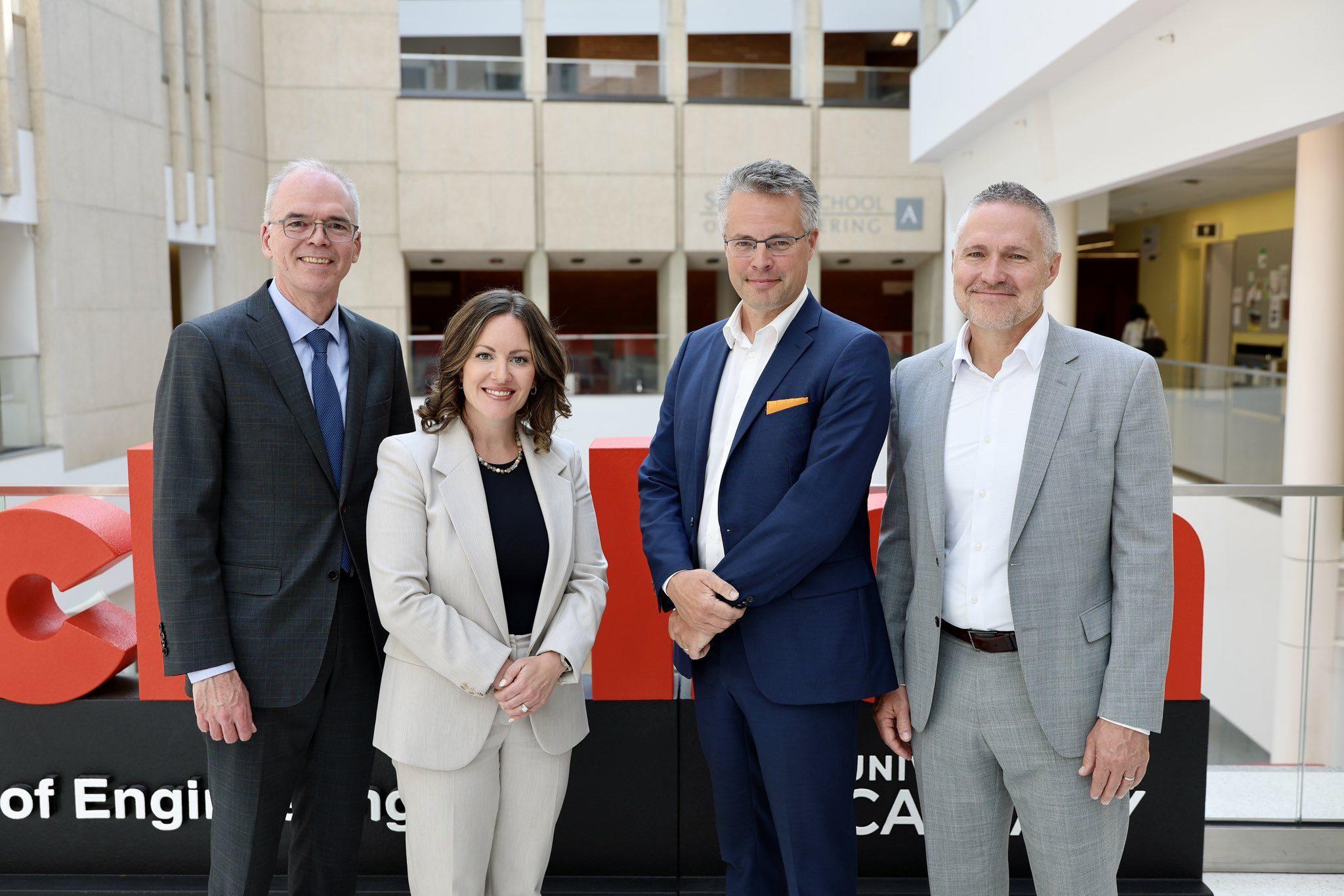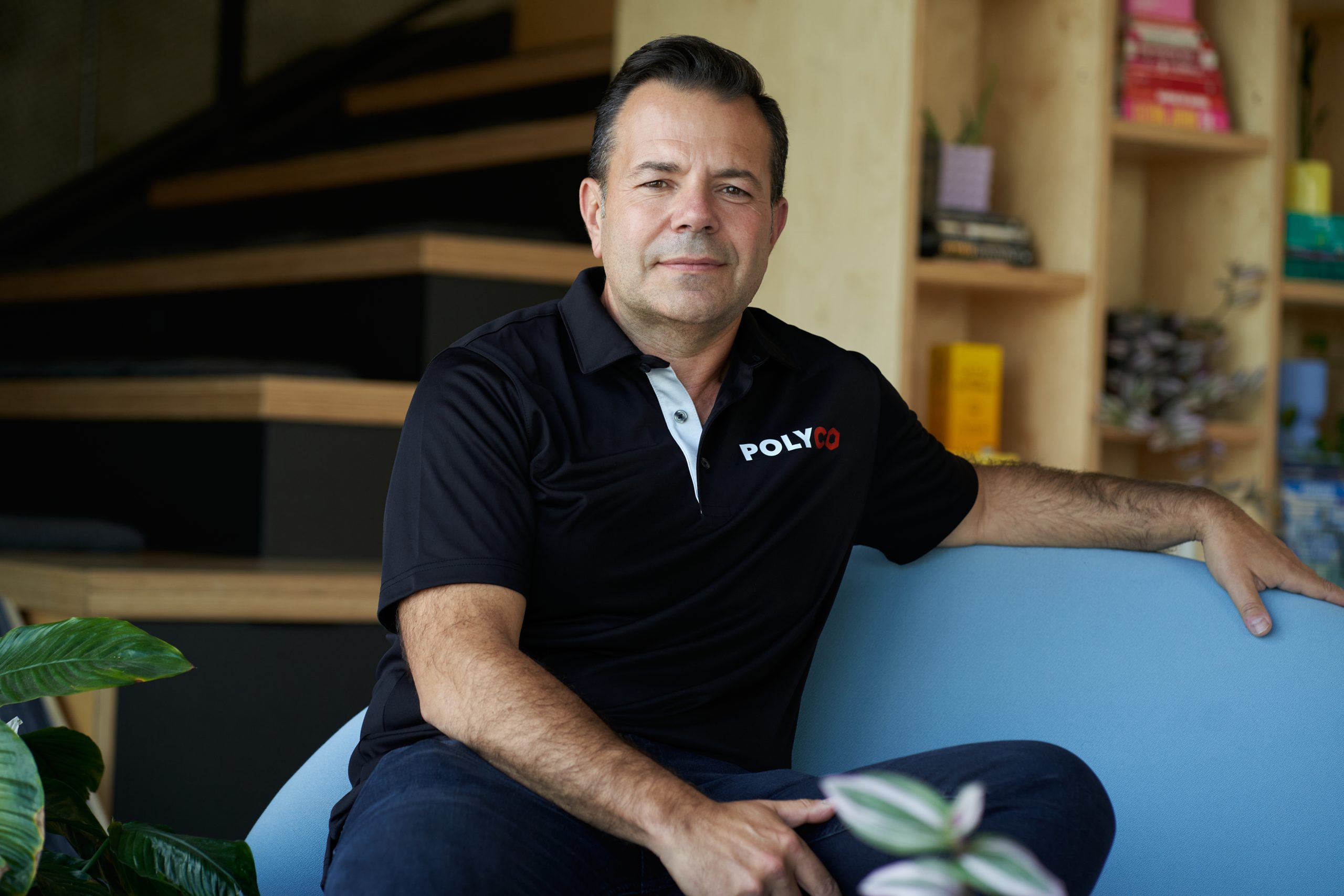Carlos Soares has sold enough flooring to furnish all the residences, businesses and public facilities in a medium-sized city since starting Divine Flooring in 1999.
But now the Calgary entrepreneur will expand into manufacturing luxury flooring using a key Alberta hydrocarbon that will create a more sustainable product and reduce reliance on imports.
“People walk on luxury vinyl floors every day in their homes, malls, stores, hotels— it is the fastest growing category in our industry over the past decade,” says Soares, whose business employs 165 people and 250 contractors in Calgary, Edmonton, Vancouver and Chicago.
“Billions of square feet of new floor coverings are manufactured and installed every year around the world.”
While luxury vinyl products mimic the look of natural woods, they generally contain polyvinyl chlorides or PVCs, a synthetic plastic polymer used to create flexibility and durability.
PVCs are difficult to recycle and take a lot of energy to produce. Most PVC production is in Asia, with roughly half of the world’s capacity in China.
Soares has discovered a more environmentally friendly alternative to PVCs produced at the Heartland Polymers plant near Edmonton.

Opened by Inter Pipeline Ltd. in July 2022, the facility produces polypropylene plastic pellets directly from locally sourced propane, a first of its kind in North America. Polypropylene is one of the world’s most widely used recyclable plastics.
By converting about 22,000 barrels per day of propane into polypropylene instead of using it as fuel, Heartland says it cuts up to one million tonnes of greenhouse gas emissions annually — the equivalent of about 217,000 cars.
“Polypropylene is our secret sauce. It can do all the things PVCs do,” says Soares.
“But it is made in Alberta and it is a low-emission product free of chemicals that make it tough to recycle.”
Soares and his partners in a venture called PolyCo have started construction on a $45 million facility in Balzac, about 25 kilometres north of downtown Calgary, to manufacture luxury flooring using Heartland polypropylene.
A second-generation Canadian and entrepreneur, he wants to give back to the place where he grew up in a meaningful way.
“My grandparents moved to Canada from Portugal in 1967 and this country has given our family so much. My father started his own welding shop in 1974 and ran it for years with old-school values. He always taught me to do the right thing and don’t compromise on quality,” he says.
“That’s what we want to do with this proposal. We are putting more Canadians to work to make a more sustainable product and strengthen our local economy.”
Production at the plant is scheduled to start in the third quarter of 2027. It will employ 100 people when it reaches full capacity, initially producing 28 million square feet of flooring every year. A second phase will eventually bring the plant’s total capacity to 50 million square feet annually.
The plant will be a “zero waste” facility, where all the dust and trimmings from the process will be swept up and put back into future production.
In July, Emissions Reduction Alberta awarded the project $5 million through its Advanced Materials Challenge, a competition funding innovative low-emission products in the province.
The funding is part of $49 million in ERA grants to 18 projects, determined after independent review by a team of experts in science, engineering, business development, commercialization, financing and greenhouse gas quantification.
Together, the projects have a total estimated value of $198 million.
ERA’s goal is to accelerate projects that can improve the economy and the environment, says Justin Riemer, the agency’s CEO.

“In the case of the PolyCo project, it highlights how to better utilize the supply chain we have here in Alberta. Everything this plant will need to source is literally within a three-hour drive,” he says.
ERA has provided more than $1 billion in grants to more than 300 projects valued at $7 billion in 16 years across the province.
“Of all the completed projects who’ve received funding, 50 per cent have been commercialized, which is a much better success rate than venture capital gets,” says Riemer, who has led ERA for three years.
“It’s important to have this funding available because a lot of financial infrastructure in this country is risk-adverse to trialing and commercializing innovation technology.”
The agency’s grants are financed through Alberta’s Technology Innovation and Emissions Reduction (TIER) fund, which collects contributions from the oil and gas sector under the province’s carbon pricing and trading system.
“ERA receives about 10 per cent of the TIER contributions,” Riemer says.
“Through these competitions, we have managed to see successful commercialization of technologies across a broad array of sectors beyond oil and gas including forestry, agriculture, power generation, critical minerals and even nuclear.”
For Soares, the vote of confidence given by the agency in the proposal was crucial.
“This ERA grant is huge for this project to go ahead but so was the decision. It gives us the confidence the government is behind the project and wants to see it materialize,” he says.
“They are serious about real ideas that can produce sustainable and affordable products right here.”
Soares is unapologetic in having his project funded by carbon levies collected from oil and gas.
“We produce oil and gas more responsibly than anywhere in the world in Alberta and I’m proud of that even though I don’t work directly in the industry,” he says.
“The fact that oil and gas contribute to grants that help create more sustainable products and technologies demonstrates the province’s commitment to doing things better.”
The unaltered reproduction of this content is free of charge with attribution to the Canadian Energy Centre.

